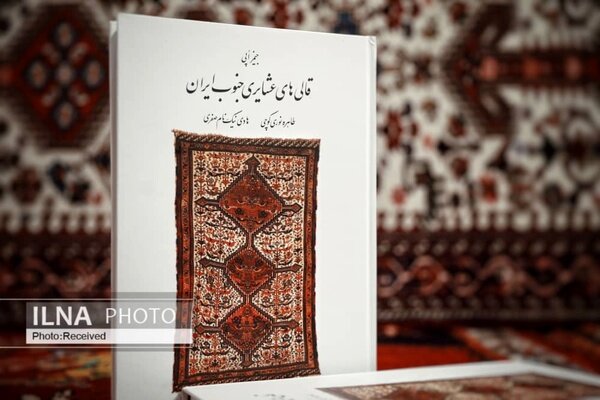‘Tribal Rugs of Southern Persia’ appears in Persian

TEHRAN – James Opie’s “Tribal Rugs of Southern Persia” has recently been published in Persian.
Using various images and drawings in his book, Opie shows a series of rugs that exhibit various degrees of urban vs non-urban influences. As he goes along, he also talks about ancient design motifs that occur in south Persian rugs.
The magnificent book presents a unique and colorful view of the extraordinary weaving achievements of the five major tribal groups in southern Persia (Iran).
Moreover, the book describes a variety of the rugs of these nomadic and village peoples whose crafts have long been mislabeled or lumped together under inexact trade names.
Persian carpets are sought after internationally. Each Persian carpet depicts a scene that seems as ageless, a procedure that can take as long as a year, these efforts have long put Iran’s carpets among the most complex and labor-intensive handicrafts in the world.
Weavers spend several months in front of a loom, stringing and knotting thousands of threads. Some practice established patterns, some make their own. When the weaving is finally done, the carpet is cut, washed, and put out in the sun to dry.
Throughout history, invaders, politicians, and even enemies have left their impact on Iran’s carpets. As mentioned by Britannica Encyclopedia, little is known about Persian carpet making before the 15th century, when art was already approaching a peak.
For instance, the Mongol invasion of the 13th century had depressed Persia’s artistic life, only partially restored by the renaissance under the Mongol Il-Khan dynasty (1256–1353). Although the conquests of Timur (died 1405) were in most respects disastrous to Persia, he favored artisans and spared them to work on his great palaces in Samarkand.
Later in the 17th century, there was a growing demand for the production of so many gold-and-silver-threaded carpets that were ultimately exported to Europe. Some were made in Kashan, but many of the finest came from Isfahan. With their high-keyed fresh colors and opulence, they have affinities with European Renaissance and Baroque idioms.
At the end of the 17th century, nomads and town dwellers were still making carpets using dyes developed over centuries, each group maintaining an authentic tradition. Not made for an impatient Western market, these humbler rugs of the “low school” are frequently beautifully designed and are of good material and technique.
“Tribal Rugs of Southern Persia” was translated into Persian by Iranian researcher Tahereh Nouri and hit bookstores by the Tehran-based publisher Nameh-e Parsi.
AFM
